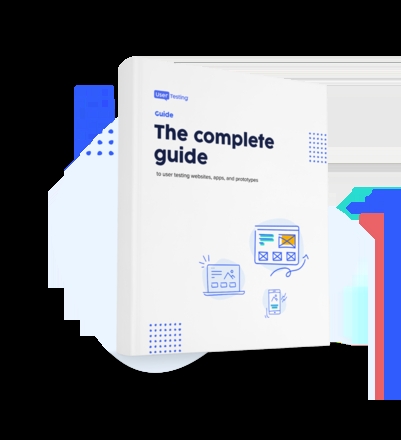
30 product discovery questions to ask about your next project

Product discovery is an essential phase of product development. During product discovery, cross-functional teams explore, define, and refine an idea to create a customer-centric solution. It's a collaborative process that involves various stakeholders, including product managers, designers, executives, and test users. Product discovery questions allow teams to uncover the most valuable product concepts and help answer the question, "What should we build and how?"
In this guide, we'll review some common and not-so-common questions that product teams should consider asking themselves during product discovery.
Product discovery questions to ask your team before user research
To ensure that product discovery is done effectively, ask a series of questions that cover various aspects of the project. These questions can guide the team to make informed decisions, prioritize features, and align the product with user needs and organizational goals. First, let’s dig into some of the most common and important questions to ask your team at the beginning of the product discovery process.
1. What problem are we trying to solve?
Start by identifying the pain point or challenge the product aims to address. Creating a problem statement is the foundation of the entire discovery process. It forces the team to define the issue or challenge the product aims to address. With a clear problem statement, the project's purpose and direction can be clear.
2. How will the product solve that problem?
Defining how the product will tackle the identified problem is a must for shaping its design and functionality. This question helps create a detailed action plan for product development by establishing a clear, problem-solving focus.
3. What are the customer’s needs or pain points?
Successful product development depends on understanding the needs and pain points of the target customers. This question will ensure the team designs the product to provide meaningful solutions and meet user demands.
Pre-made test template available: Needs and frustrations discovery
4. How are we currently solving these needs or pain points?
This question prompts the team to evaluate existing solutions or workarounds, if any, that users employ to address their needs or pain points. It helps to identify areas where the product can provide superior or more efficient solutions.
5. What existing solutions or competitors are in the market?
Analyze the competition to gain insight into what works and what doesn't. Examining the competitive landscape allows the team to see potential gaps in the market and opportunities for differentiation. It's a critical step in market analysis and product positioning.
6. How will we differentiate our product from competitors?
This question compels the team to think creatively about what unique value the product will offer that sets it apart. The answer often forms the basis for the product's value proposition and marketing strategy.
Pre-made test template available: Competitive comparison
7. Who is the target audience?
Knowing the target audience helps tailor the product to their preferences, needs, and pain points. The product's features and design have to resonate with the intended users.
8. What are our goals and key performance indicators (KPIs)?
Clearly define the project's success metrics, such as conversion rates, user engagement, or revenue growth. Explicitly defined goals and metrics will allow the team to measure the product’s performance, impact, and ability to meet objectives.
9. What are the technical constraints and possibilities?
Assess the technical capabilities and limitations to determine the project's feasibility. Doing this helps to align the product's features and design with what can be realistically achieved.
10. What are the potential risks and challenges?
Identifying risks early in the discovery phase allows the team to develop risk mitigation strategies. It helps in proactively addressing challenges and avoiding unexpected setbacks during development.
11. How does this project align with the organization's goals?
Aligning the product’s goals with the organization's mission and vision promotes strategic consistency. It prevents the team from developing a product that may deviate from the organization’s core objectives.
12. What is the estimated timeline and budget for this project?
Clearly define the project's scope and allocate resources accordingly. Estimating a structured project timeline and budget helps manage resources efficiently, prevent scope creep, and set realistic expectations for stakeholders.
13. What are the must-have features and nice-to-have features?
Prioritize the essential features that directly address the problem at hand. Must-have features are imperative for meeting the core requirements, while nice-to-have features can be added depending on available resources and time.
14. What are the legal and compliance requirements for this product?
The product must adhere to all relevant laws and regulations to avoid potential legal issues and protect the organization's integrity.
15. What is the pricing strategy for this product?
Defining the pricing strategy is necessary for monetization and market positioning. A pricing strategy verifies that the product is competitively priced while covering its development costs.
16. What kind of post-launch support and maintenance will this product require?
Consider the ongoing effort needed to keep the product stable and functional. Preventing post-launch problems will help cultivate customer satisfaction and loyalty.
17. What emotional impact do we want this product to have?
This question encourages teams to think beyond functionality. The product should also resonate with users on an emotional level, building a deeper connection.
18. What are the potential ethical implications of this product?
In an era of ever-expanding ethical concerns, the team should evaluate how the product might impact users and society as a whole – both now and in the future. Addressing ethics through responsible development will help avoid future harm and safeguard the organization’s reputation.
19. What are the potential unintended consequences of this product?
Consider the ripple effects that the product might have, both positive and negative, on users and the market. Identifying unintended consequences is a form of risk management. This can help the team prepare for unexpected outcomes and mitigate them effectively.
20. How can this product contribute to sustainability and environmental responsibility?
Thinking about the environmental impact of a product can set it apart. Focusing on sustainability aligns the product with broader societal and environmental goals, which can be a strong selling point and show a commitment to responsible business practices.
21. What is the long-term vision for this product beyond the immediate release?
Think about the product's evolution and potential future iterations. By planning for the product's future, the team can effect its continued relevance, protecting it from becoming obsolete shortly after launch.
22. How will this product support accessibility and inclusivity?
The product should be usable by as many people as possible, regardless of disabilities or limitations. Prioritize accessibility and inclusivity to demonstrate a commitment to equal access and social responsibility.
Product discovery questions to ask users during a test
Real user testing during the product discovery phase is crucial in creating a product that resonates with its intended audience and succeeds in the market. User testing is valuable, allowing teams to refine and validate ideas from the beginning.
Real user feedback during product discovery can guide decision-making, enhance the product's user-centered design, and foster iterative improvements. The following questions will help the team gather specific, actionable feedback from real users.
23. What was your initial impression of the product?
Users' first impressions often shape their overall perceptions. Understanding their initial reactions can reveal whether the product aligns with its intended message and branding.
Pre-made test template available: First impressions
24. Could you complete the key tasks you expected to perform?
This question assesses the product's user-friendliness and functionality. It helps identify usability issues or roadblocks that may hinder users from achieving their goals.
25. What features or aspects of the product did you find most valuable?
The product team can reinforce and prioritize the most valuable features by identifying the product’s strengths and highlights from the user's perspective.
26. What features or aspects of the product were confusing or frustrating?
Understanding users' pain points, confusion, or frustrations gives insight into areas that need improvement. This feedback allows the team to refine the product and create a more user-friendly experience.
27. Would you recommend this product to others? Why or why not?
This question gauges user satisfaction and the likelihood that they would advocate for the product. It also spotlights any major issues or concerns that might deter potential users, helping the team address them proactively.
Product discovery questions to ask users after testing
It’s important to heed your test users’ feedback during product discovery. Here are some questions to consider asking your test users and your team after conducting testing.
28. Is the product performing the way it should?
Post-launch evaluation allows the team to confirm that the product meets its intended objectives and provides value to users.
29. What are the product’s strengths and weaknesses?
Identifying the product’s strengths will help the team leverage what's working well. At the same time, recognizing its weaknesses directs attention to areas that need improvement or innovation.
30. How can we continue to improve the product?
By fostering improvement through continuous discovery, the team can allow the product to remain competitive and valuable in the long term. This will facilitate ongoing innovation and adaptability.
Final thoughts on product discovery questions
Product discovery is not about finding a single "right" answer but about exploring different possibilities and making informed decisions based on the best available information. The more thorough and thoughtful the product discovery process, the higher the likelihood of delivering a successful product that truly meets user needs and business objectives.
As teams navigate the product discovery process, they should consider incorporating various techniques and methodologies to gather insights. These may include user interviews, surveys, usability testing, competitive analysis, and brainstorming sessions. Additionally, it's valuable to maintain a user-centered approach throughout, continuously seeking feedback and validation from potential users.
Real user testing in the product discovery phase is crucial for creating a product that truly resonates with its intended audience, mitigates risk, and increases the chances of success in the market. Through our Human Insight platform, UserTesting can optimize the product discovery process. We can help your product and design team incorporate real user feedback from the beginning of product development through every post-launch iteration.

Get started with experience research
Everything you need to know to effectively plan, conduct, and analyze remote experience research.





